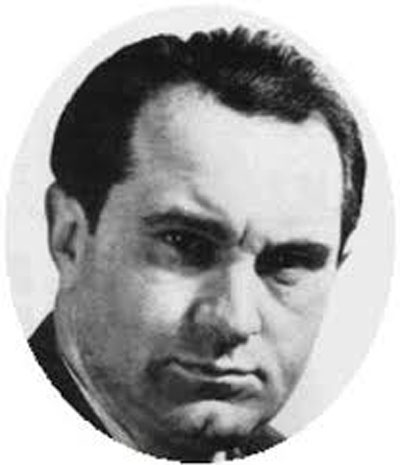Eugène Bozza

- Born: April 4, 1905, Nice, France
- Died: September 28, 1991, Valenciennes, France
Duettino pour deux bassons
- Composed: 1954
- Duration: approx. 10 minutes
It was for his operas that French composer and conductor Eugène Bozza achieved prominence during his lifetime, but his posthumous recognition centers largely on his more modest works for woodwinds and brass. A good number of them have become favorites for chamber music programs, despite (or perhaps because) the composer tended to favor idiosyncratic combinations of instruments.
Bozza was a stunning young talent who was shaped artistically by Parisian trends between the two world wars. Over his lifetime, his body of work seems to have embraced every -ism of the 20th century: expressionism, futurism, objectivism, serialism, minimalism, maximalism. Yet his characteristic charm, elegance, lyricism and humor are never in short supply.
Bozza’s Duettino pour deux bassons is no exception: its title, a mix of Italian and French (as was the composer himself) presages the mischievousness in the work via Bozza’s choice of the diminutive, Duettino. The 1954 work, written during the composer’s tenure as the director of the conservatory of Valenciennes, reflects the distinctly Parisian pedigree of the bassoon idiom: both Paul Dukas’ The Sorcerer’s Apprentice and Stravinsky’s Rite of Spring are echoed in the work.
The work unfolds in four short movements. The first, Allegro moderato, is structured in three sections. It opens in C major, in common time, with the staccato tune volleyed between the two performers in imitation. The second section shifts the character to one of grace and lyric elegance as the arpeggios of one bassoon accompany the soaring aria of the other. The opening motive then returns, once again seesawing between the two players before coming to rest.
The second movement, Andantino, also opens with imitation. This time it is a cantabile melody that the composer transforms into a dialogue between the two bassoons, first in opposition, then in accord. The movement comes to rest, improbably, on the interval of a major second, elegant in spite of its dissonance.
The composer marks the third movement allegro ma non troppo, with another Italian-French composite: “stretto canonique,” that is, a canon in which the second voice enters before the first voice has finished. Here the bassoons are both persistent and playful, each stepping on the toes of the other as the movement tumbles to its conclusion.
The fourth is the only movement to open with no imitation. Rhythmic displacement and wide leaps in the lower voice accompany a burlesque march tune in the upper. Here is the dry wit of Bozza at his self-deprecating best, puncturing his final phrases with dissonance lest the listener take his music too seriously.
—Dr. Scot Buzza